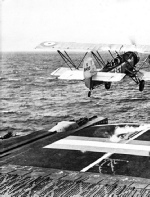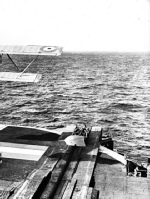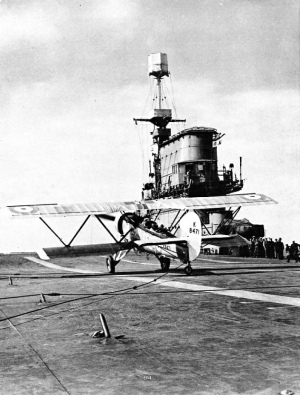

© Wonders of World Aviation 2015-
Part 6
Part 6 of Wonders of World Aviation was published on Tuesday 12th April 1938, price 7d.
This part included a central photogravure supplement showing the Fleet Air Arm. This section illustrates the article on The Fleet Air Arm.
The Cover
The cover this week, the original of which comes from Flight, shows a production Fairey Battle during its acceptance tests.
An article on The Work of the Test Pilot appears in Part 4, with a similar photograph in black and white.
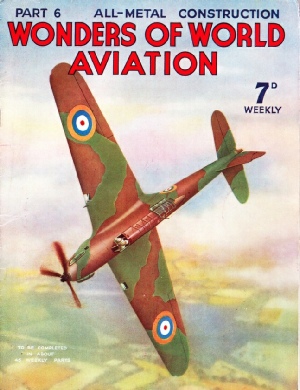
Contents of Part 6
The First to Australia
(Part 2)
Air Routes Across America
The Fleet Air Arm
The Fleet Air Arm
(photogravure supplement)
The Fleet Air Arm:
Photogravure Supplement - 2
A TAKE-OFF FROM THE DECK OF HMS COURAGEOUS, which was converted to an aircraft carrier in 1928. The machine is a Blackburn Shark torpedo-bomber-reconnaissance biplane. During take-offs and landings, an aircraft carrier steers directly into wind to keep as low as possible the speed of the aircraft in relation to the deck. The jet of steam, by which the ship’s navigator keeps a check on the wind direction, is visible below the machine in the picture.
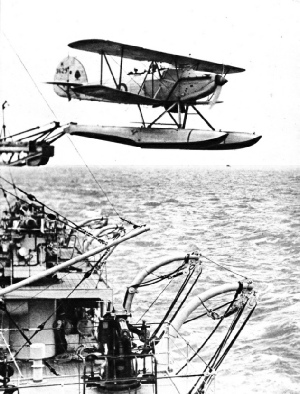
The Fleet Air Arm
Photogravure Supplement
A HAWKER SEAPLANE LEAVING THE CATAPULT of HMS Sussex. The aircraft is attached to a carriage on the catapult, and the engine is run up to full speed. At a signal from the pilot the carriage is shot along its runway of seventy to ninety feet by a charge of cordite. When the carriage reaches the end of the runway, it releases the aircraft, which shoots off into the air at flying speed.
You can read more about seaplanes in Part 2.
